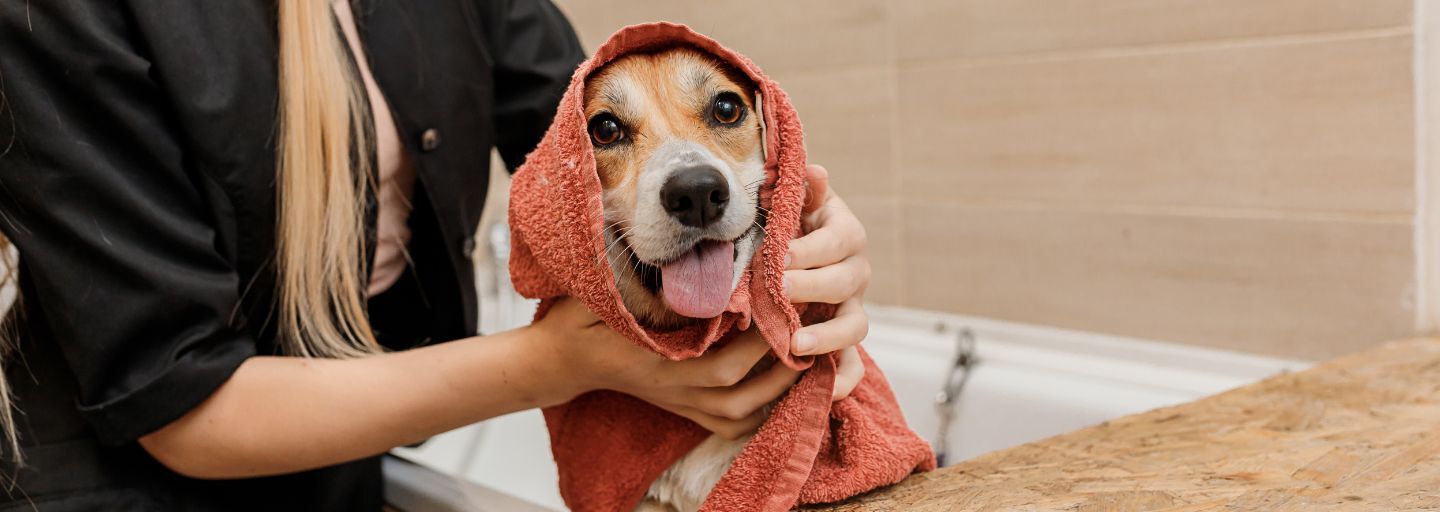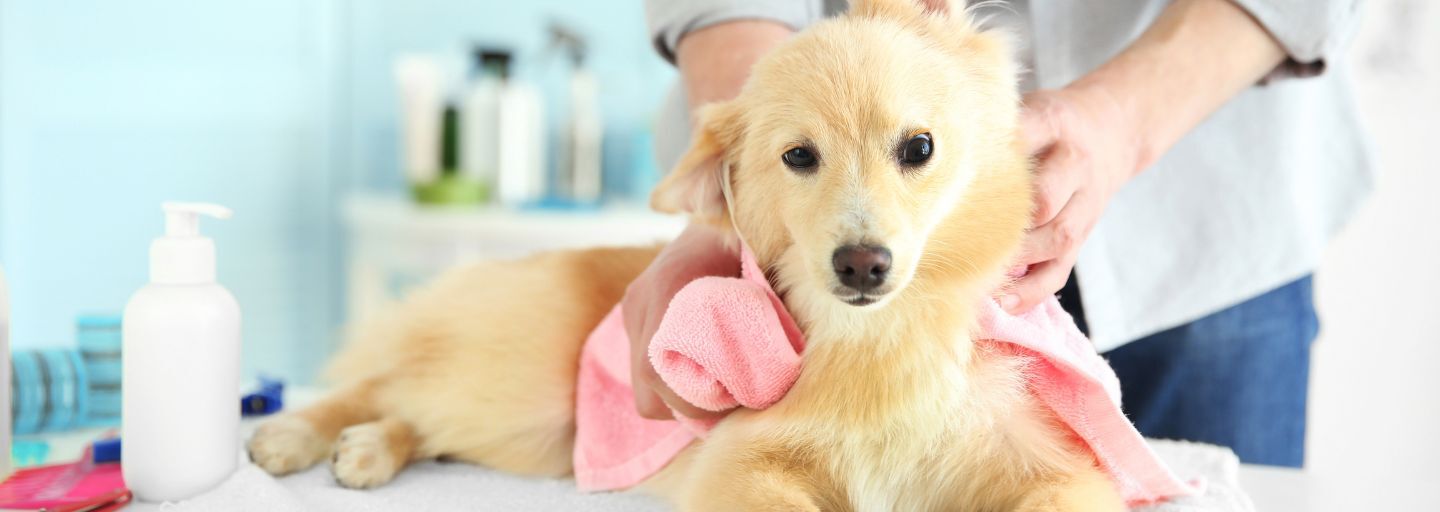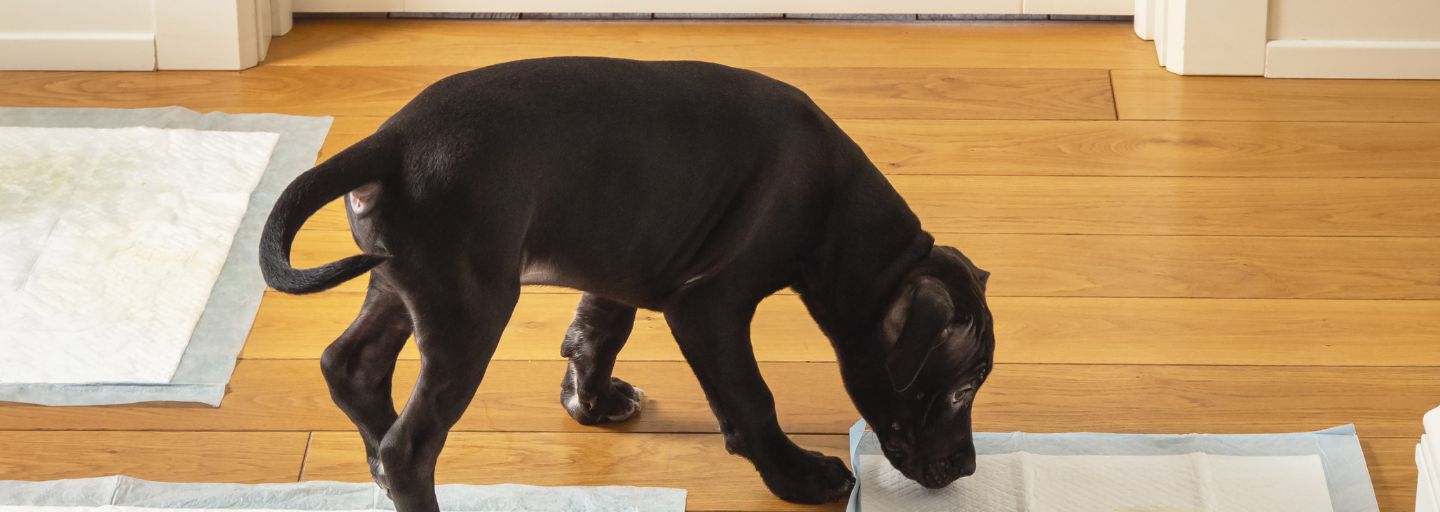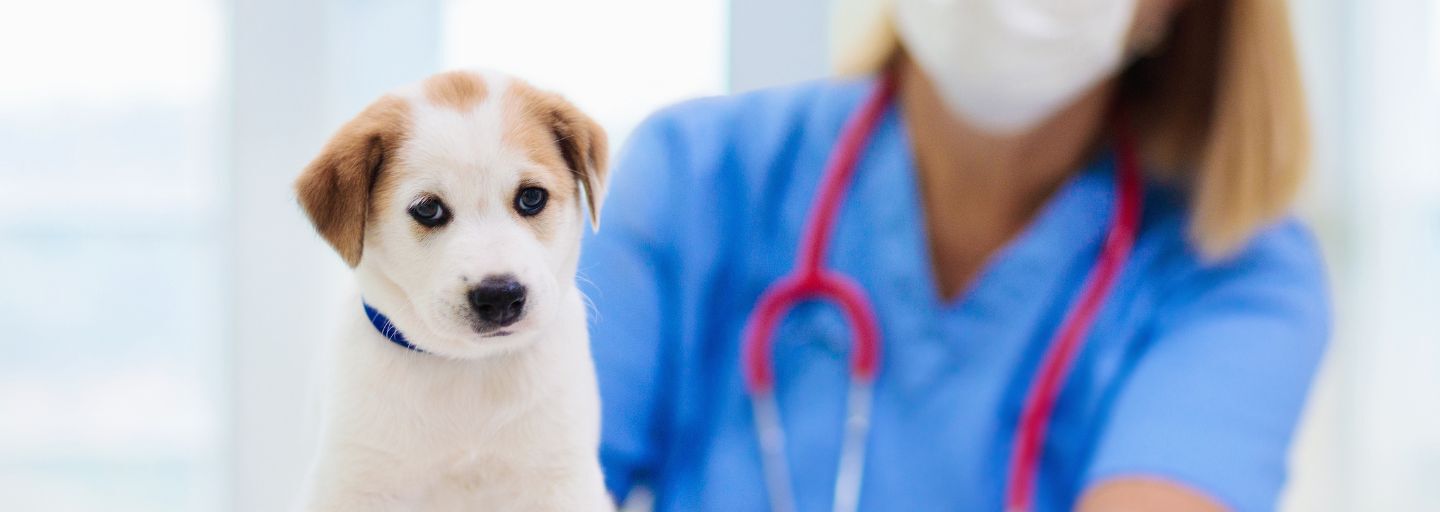Scientific evidence suggests that grooming a dog is a great way of reducing stress. And your puppy will benefit from it, too!
Groom at the top
Grooming isn't just about making your puppy look good. Regular care removes dead hair, keeps the coat and skin healthy, and gives you the opportunity to check your pup’s general health.
It’s also important time spent together, building your relationship, trust and understanding. Scientific evidence shows that grooming sessions reduce stress and blood pressure for both of you.
Brushing
Initially, a puppy's coat is quite different to an adult dog’s. It may be softer, fluffier, and shorter, but it’s still important to get your pup used to being groomed, even if he doesn't actually need it much yet.
Top dog-brushing tips
- Get your puppy to sit on your lap, have a quick cuddle and gently start to brush.
- Give praise for being good in a quiet, soothing tone.
- After just two minutes, stop brushing and offer a treat.
- Repeat several times a day, gradually increasing the length of brushing time.
- If your puppy attempts to bite or play with the brush, turn away but without letting go. Puppies soon learn that naughty behaviour will lose your attention.
- After about five days, once your puppy is familiar with the sensation, start to groom his belly, tail, ears and other sensitive areas. Be extra gentle, and keep the initial sessions short and enjoyable.
- Touch the feet and examine the nails and toes.
- Look inside the ears and gently open the mouth.
- After a couple of weeks, once puppies have learnt the routine, switch the grooming to a table with a non-slip surface, or a spot on the floor that provides enough space for when he is bigger.
- This programme ensures your dog gets used to being handled. Always end a session with a treat and a game.
If your dog gets into the routine of being handled, and learns to enjoy it, puppy grooming will be much easier in the future.
Different puppy coats
Once your puppy is settled, your grooming routine will depend on your puppy’s coat type.
1. Smooth Coats
Breeds with smooth coats don't really need a lot of grooming. A quick once-over each week is enough (although a daily brush is a great way of spending time together). You'll need to use a rubber brush or grooming mitt to loosen dead hair and dirt and a bristle brush to remove it.
2. Short Coats
Breeds with short coats need regular brushing to prevent matting. Begin with a pinhead brush to remove mats and knots, then follow with a bristle brush to remove the dead hair and dirt. Never cut out mats using scissors.
3. Long Coats
These require daily attention to avoid knots. Begin using a pinhead brush or comb to untangle matted hair. Never cut out mats using scissors. Comb the hair with a wide-toothed comb, taking particular care around the backside, tail and legs. Trim any hairs that have got out of control
4. Silky Coats
These need a lot of attention. Start by teasing out tangles with a pinhead brush or comb, then use a bristle brush to bring out the natural shine. To give your dog a bit of style, opt for a centre parting, brushing downwards on either side. Trim wayward hairs.
Styling your puppy
Some breeds require special grooming techniques. Your breeder or a professional groomer can advise you of your breed's specific needs, but as a rough guide:
- Terriers need stripping (where dead hair is plucked from the coat);
- Some breeds, such as poodles, need scissoring into shape;
- Some long-coated show dogs, such as the Yorkshire terrier, need the coat put into wrappers (papers) to protect it.
- Extensive matting or snarls can accelerate damage to surrounding hairs. If your dog has a challenging coat, enjoys a daily dip in the pond, or if you’d rather be walking your dog than combing him, consider regular visits to a professional groomer who can provide a soothing bath, gentle hair drying and a thorough brushing.
Washing your puppy
Most dogs rarely need more than a handful of baths a year. In fact, show breeders even discourage baths altogether for some rough and wire coat breeds. However, if your new puppy has a streak of mischief, you may find you’re reaching for the shampoo rather more often.
Top puppy-washing tips
- When your puppy is still small, the kitchen sink makes a good bath. Alternatively, use a plastic tub. As your pet gets larger, switch to the shower or bath and use a non-slip mat.
- Use a shower attachment to wet the coat, making sure the water is warm, not hot.
- Wet the coat thoroughly, being careful to avoid getting water in your puppy’s eyes. Part the hair down to the skin to make sure it’s wet all the way through.
- If your puppy shows signs of nervousness, especially the first time, offer praise and reassurance throughout. Try distracting the pup with a treat.
- Use a special puppy shampoo that’s designed for your puppy's coat type and always read the label instructions – some shampoos require dilution.
- Once the coat is lathered, rinse thoroughly. If any soap is left in the coat, your puppy may be itchy afterwards.
- If you’re using a pet conditioner, ensure it’s rinsed out, too.
- Towel-dry before your puppy has a chance to shake!
- Make sure the puppy is kept in a warm room until fully dry.
- If the coat is very long, it may need blow-drying. Your breeder or groomer will include this in your grooming instructions. Make sure the dryer is not too close to the skin, or on a hot setting. Hair dryers can be quite frightening for a puppy, so reassure him throughout the process and reward good behaviour.
- Make sure the coat is completely dry before he goes outside.
If handled properly, bathing your puppy can be a fun – if occasionally very wet – experience for you, the pup and anyone else who wants to get involved.







